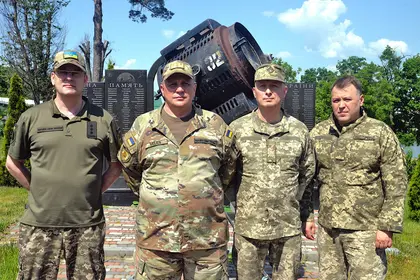On May 29, at about 3:20 in the morning, a 20-year-old Ukrainian soldier nicknamed “Pokémon” shot down a Russian missile flying at tree-top height on its way to hit Ukraine’s capital Kyiv. It was, on paper, pretty much an impossible shot.
The National Guard trooper’s weapon was a Soviet-era almost obsolete anti-aircraft Igla-1 [Needle] missile launcher worth about $2,000. The target was a Russian X-55/101 cruise missile, a high-tech guided weapon that costs around $13 million, and was designed by Russia to fly at very low altitude, change direction autonomously and deliver conventional [or nuclear] warhead to within a few meters of the pre-programmed target’s coordinates.
The odds on an Igla-1 operator on his own bringing down a cruise missile, flying at around 200 meters a second, are almost non-existent.
Think about it - he has to hear the missile coming, place the launcher on his shoulder, point it in the right direction, wait for the launcher’s infra-red system to lock onto the missile, hope the lock holds long enough for its 9M313 missile to launch, and do all that that before the Russian cruise missile flies beyond the Igla’s limited five kilometers range.
If he’s in the right place when it was launched, stands somewhere along the missile’s flight path, and knows ahead of time what direction it’s coming from, the Ukrainian Igla-1 operator’s chances of shooting down a Russian X-55 may have improved ever so slightly - which is where the local volunteers from Bucha come in.

South Korea Demands 'Immediate Withdrawal' of North Korean Troops in Russia
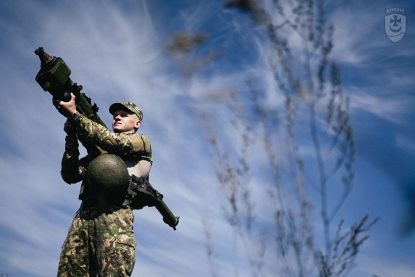
Ukrainian National Guard soldier “Pokemon” takes aim with an Igla-1 anti-aircraft missile launcher in a photograph published by the Ukrainian military on May 29.
In a village to the north-west of Kyiv, during the hour or so between the time Ukraine’s national air defense network knew the missile was in the air and the moment it got shot down, a team of middle-aged [and in some cases older] men had been working on their phones and radios, passing messages, checking grid coordinates, and scrambling their regional civilian defense network.
From inside a building normally used for birthday parties and village meetings, the mostly retired Ukrainian army officers, now all civilian volunteers in military uniform, calculated possible missile tracks, issued orders to machine gun trucks and searchlight operators, fielded civilian phone calls and messages (some panicking, others offering fresh information about the location of Russian missiles) and made sure they provided accurate, timely information to the nearby army and national guard units, including the one to which Pokémon belongs.
“Our job is coordination: information, tracking, telling units what’s happening where, figuring out when it’s happening and taking the right action,” said Andriy “Veles” Verlaty, commander of the Bucha City Territorial Volunteer Formation (Добровольчого Формування Територіалтної Громади м.Бучі) “We’re not military … but of course we used to be."
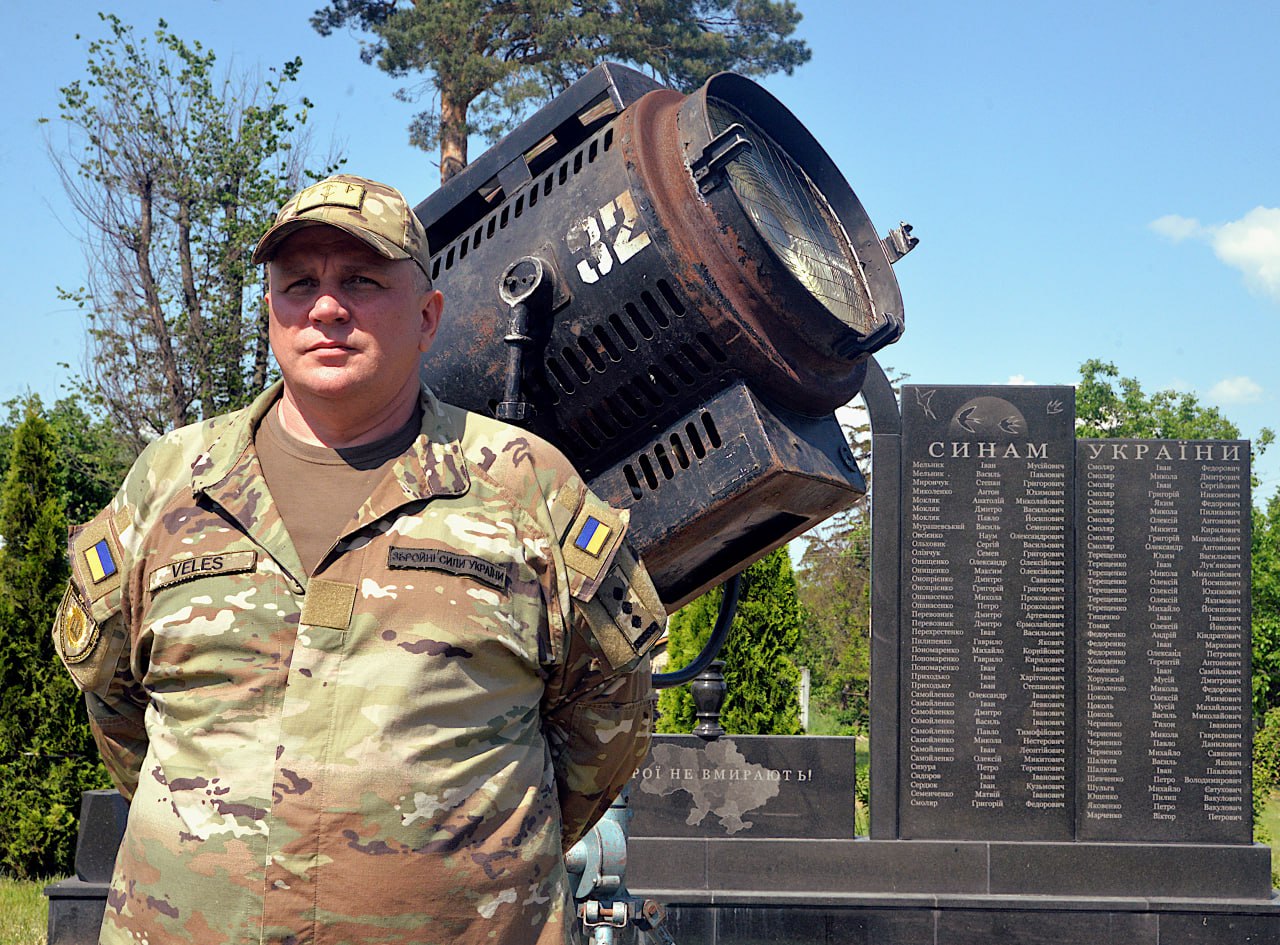
Colonel Andrij Verlaty, commander of the Bucha district volunteer forces, poses for a photograph in front of a monument to Ukrainian war dead. He was retired until the Russians invaded. PHOTO: Stefan Korshak
Verlaty confirmed to Kyiv Post that a Russian drone, also shot down by a Ukrainian National Guard forces Igla-1 operator on May 29, had been brought down thanks, in no small part, to early warning and other information provided by the Bucha volunteer team.
Valentyn Kalashnyk, a unit spokesman, told Kyiv Post the Bucha team is responsible not just for territory around Bucha city, but "throughout the northern part of the Kyiv region." Verlaty told Kyiv Post monitoring of incoming weapons starts "far north of Kyiv".
The world knows the Ukrainian suburb Bucha as the scene of some of the worst Russian war crimes committed as part of Moscow’s February 2022 invasion of Ukraine, the site of hundreds of unmarked graves containing the remains of tortured and murdered civilians, often with their hands and feet tied.
In times before the invasion, Kyivites knew Bucha and the region surrounding it as a pleasant district with pine forests and scenic streams, more than its share of upscale apartment developments and individual family homes. A quiet place, not too far from the capital, where city dwellers would take weekend strolls and where military professionals often retired; something akin to Britain’s Oxfordshire or the northern region the US state of Virginia.
When the Russian army advanced towards Kyiv last year, they met a civilian population, in the 1,500 square kilometers that make up the Bucha District, that was not just inclined to fight, but which also included a hard core of former military leaders whose experience most armies would envy. Verlaty had served for more than a quarter of a century in the army, led combat units all the way from platoon to brigade, and fought in the Donbas. His retirement, he said, had ended with the Russian invasion.
“When the war started, I had 74 men, 21 rifles, 2 pistols and one sniper rifle,” Verlaty said. “When the Russians’ left [the Kyiv region], we were more than 300 men, fully armed with weapons and ammunition we had taken from the enemy. We even had armored vehicles.”
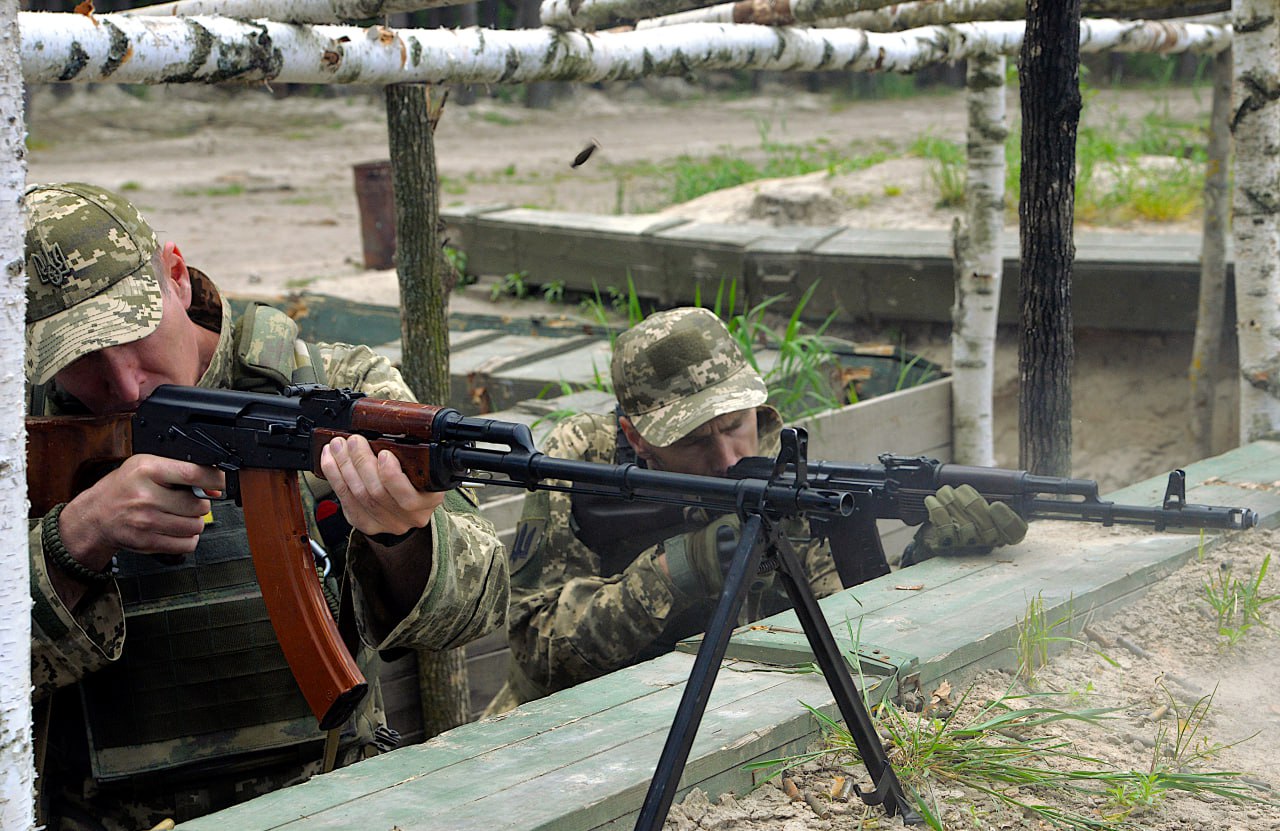
Ukrainian National Guard troopers Pavlo Baidan (L) and Serhiy Rebrik (R), fire at a training range near Kyiv. Both first fought as members of pickup civilian units defending the Bucha region, where their families still live. PHOTO: Stefan Korshak
Every member of Verlaty’s senior staff - the team that handles all the data relating to incoming missiles in the Bucha region – had, similarly, a decade or more of command experience.
Several had served overseas. One told Kyiv Post he had served with the Russian army, fought on both sides in Chechnya and had even worked as a contractor with a US commercial military company in Iraq. Every single member of the Bucha volunteer territorials told Kyiv Post that they had fought as civilians to defend their homes against the Russians, for more than a month.
Most civilians, in most countries, having helped to successfully defend their homes from a foreign invasion, would then go back to their normal lives and leave the rest of the war to the young men and women of the professional military.
In Bucha region, however, Verlaty still commands his 300–400-member, all-volunteer organization that has moved with the times. Some fighters still train in marksmanship and practice ambushes just in the unlikely chance the Russians return. Additionally, the group has expanded its activity and now run training sites, field security teams, collect local intelligence, and tracking down civilian equipment suitable for military use.
A critical tool they use when intercepting Russian drones and cruise missiles, at night, is the searchlight. In Bucha, the territorial defense fighters have adapted Russian-manufactured stage floodlights which are “very effective” in helping see Russian aircraft at night, volunteer Ihor Pavlenko said.
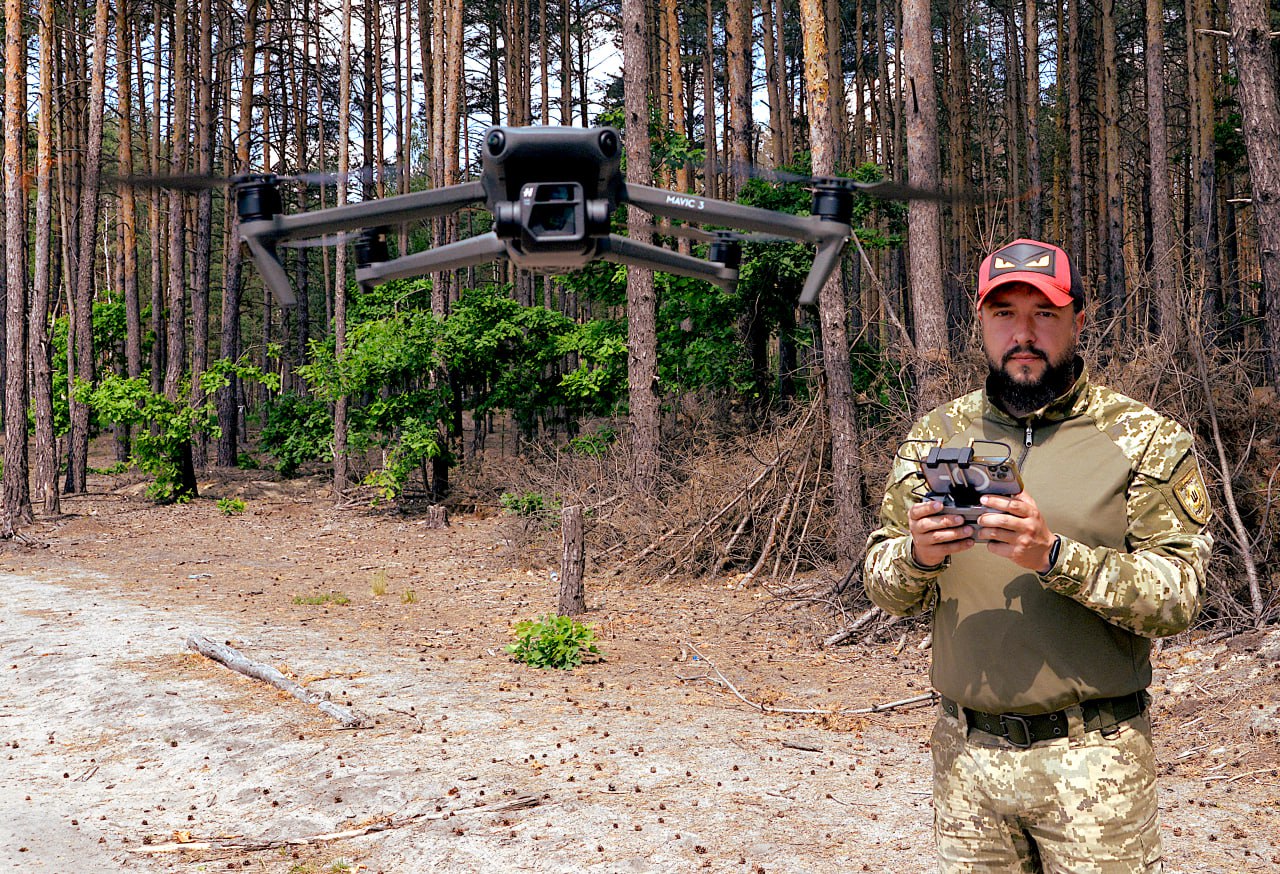
Bucha region volunteer and drone instructor Oleksandr Overkivskiy demostrates pin-point control with a Mavic drone. He joined Ukrainian forces as a civilian volunteer and flew combat missions for months, primarily in the war's Donbas sector. PHOTO: Stefan Korshak
Oleksandr Verkivskyi, a businessman who had a hobby aircraft store in the Bucha region, before the war, wasn’t involved in ground fighting at the outset of the invasion because the Russians occupied the town where he lived. Once he made it to Ukrainian lines, he became one of the war’s early drone operators, learning on the job how to fly civilian quad-copters for reconnaissance and artillery fire adjustment.
A year later with the combat experience he gained, mostly in Donbas, Verkivskyi has become one of the main operators for the Bucha region’s volunteer-run drone program in which - among other projects - local civilians develop improvised munitions to drop from drones, modify civilian drones for military use, and train troops on the operation of drones large and small. Verkivskiy’s task for the day, during the visit by Kyiv Post, was to familiarize a pair of operators from a Lviv unit.
”I’m always busy,” he said. “There is no such thing as too many drones.”
The National Guard gunner Pokemon had become a bit of a national hero, the day after he shot down the cruise missile, with a patriotic write-up on an official Facebook page and his official photograph splashed across major Ukrainian media.
Some, Ukrainian reporters were already pointing out that this is the second Russian cruise missile he’s knocked down with his Igla-1, pushing a narrative, via YouTube that he was a, somewhat, super-soldier.
Hours after the shoot-down, Kyiv Post contacted Colonel Verlaty to ask him, given the number of Russian cruise missiles that had flown through Bucha region’s air space earlier that the morning, and all the work and coordination that had to have taken place to enable Pokemon’s Igla-1 to take an X-55 down, how much, sleep he had managed in the previous 24 hours.
“About two hours,” Verlaty said, with a shrug and a smile.
Government sources described his downing of a Russian cruise missile earlier in the day as a demonstration of individual military skill. But we mustn’t overlook the fact that many others contributed to that success; many of them retired soldiers working as volunteers.
You can also highlight the text and press Ctrl + Enter


